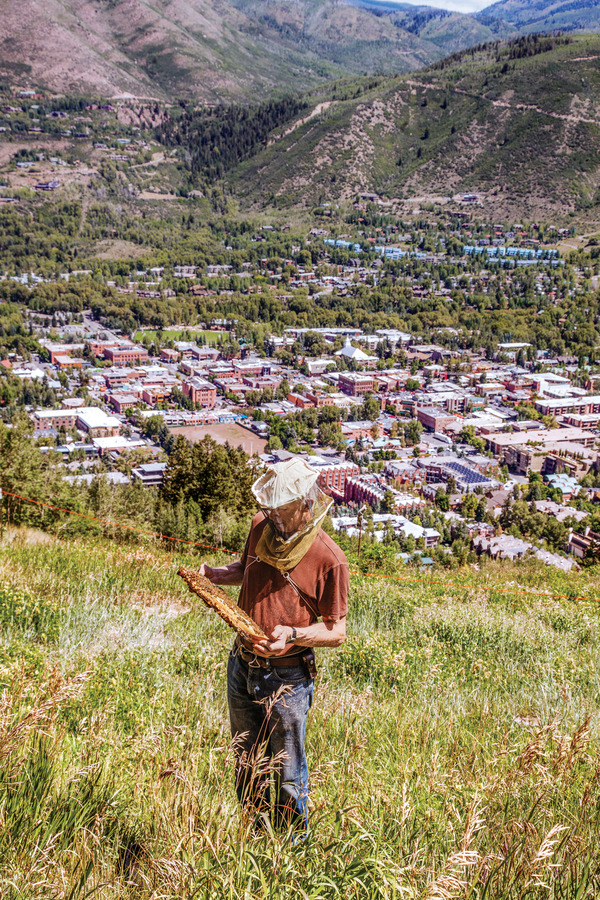The Local newsletter is your free, daily guide to life in Colorado. For locals, by locals.
The last place you’d probably expect to run into a beekeeper is on the edge of a world-class ski run. That is, however, where you will find Ed Colby. A New Castle native and ski patroller for Aspen Skiing Company for 40 years, Colby took to the practice of beekeeping 20 years ago.
Colby now maintains about 10 hives on the mountain during the summer and sells the golden honey produced by the bees to Element 47, the posh restaurant inside the Little Nell hotel at the ski hill’s base. We recently caught up with Colby to learn about his hobby turned job and the unique location of his hives.
How did you get into beekeeping?
I have sweet cherry trees in New Castle, and a lot of years, I didn’t get any cherries. I didn’t know if it was frost or possibly not good enough pollination, so I thought that if I could get bees and keep them on my property, at least I could rule out the pollination problem. I discovered I only got sweet cherries one year out of five—even with bees on the property—but I noticed that I got honey every year.
What made you choose Aspen Mountain?
There’s a flower called milk vetch that is not common in this part of Colorado. But it’s on Aspen Mountain, from top to bottom; I thought bees might do really well there.
Do you get support from the people who run the mountain?
I had an in there with the mountain manager—Peter King—and I said, “What if I tried putting some bees on the mountain?” He thought it was a great idea. It’s kind of a wacky concept—keeping bees on a ski hill—but the Aspen Skiing Company is a green company, and they’re interested in doing things that are kind of on the edge of the envelope. I started keeping 10 hives on the mountain, and this is the fourth season I’ve had them up there.
Where on Aspen Mountain do you keep your hives?
They’re on Straw Pile trail. It’s kind of on the World Cup racecourse. This is a major ski run, so I wouldn’t want anyone plowing into them—I get them out of there in the fall and bring them back in the summer when the dandelions start popping up. They’re at about 9,000 feet. That’s about the limit in elevation for honeybees.
How much honey do the hives on the World Cup racecourse yield?
It’s pathetically small—about 10 pounds per hive, whereas a typical yield for my other locations is about 40 pounds per hive. There are three pounds to a quart, to give you an idea of how much that would be in volume.
What kinds of challenges do your hives face?
Anybody who doesn’t live under a rock has heard of colony collapse disorder—this mysterious dying off of bees. While I can’t say that I have experienced that directly, I can say that it seems harder to keep bees alive. Queens die, they become less prolific, and there are all kinds of diseases and parasites. It’s a constant challenge. It used to be, 50 years ago, you could put some hives out in your backyard and you basically didn’t have to do anything but harvest the honey in the fall. Now it’s a constant struggle to try to make these guys survive.
How did you start selling the honey to the Little Nell?
Robert McCormick was the chef and he agreed to buy the honey. Once he started buying it, he raved about the quality. Today I drop it off at the Little Nell in buckets. It’s kind of their baby.









